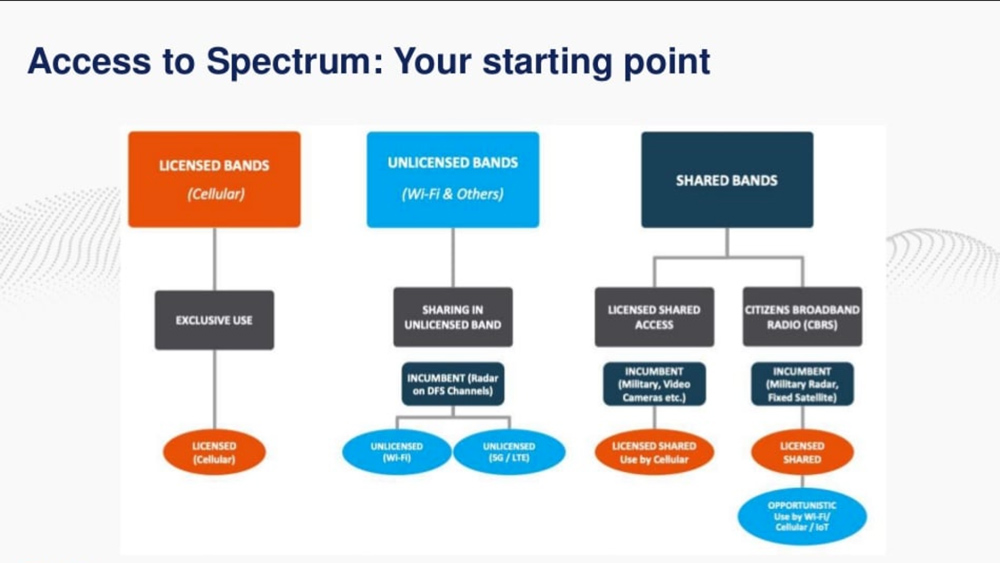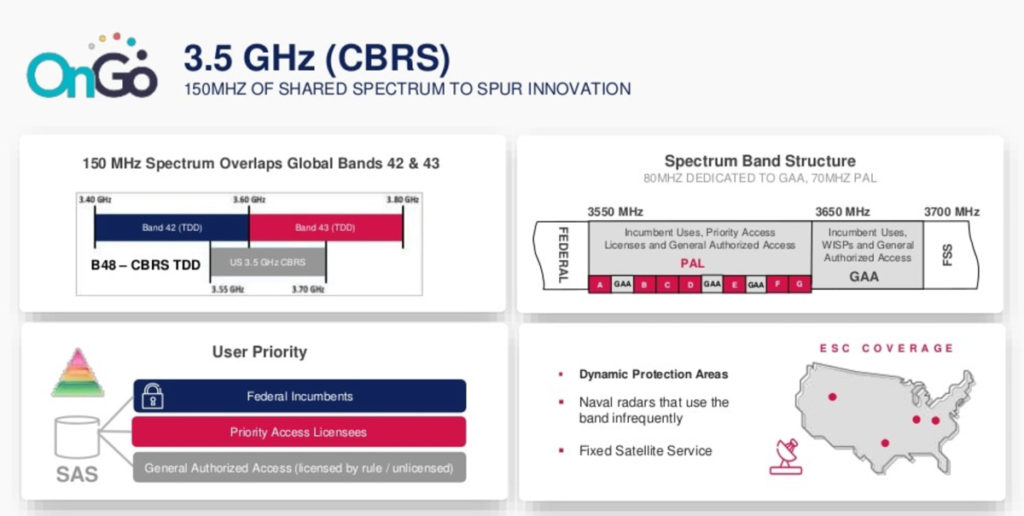As the quest for increased capacity and speed within wireless data networks increased over the first decades of the 21st century, 4G LTE became the standard for public broadcast networks seeking high capacity, high speed solutions. However, LTE technologies have not previously been used to create private networks due primarily to the prohibitive expense and technical difficulty of doing so.
In the last few years, however, several breakthroughs have made it possible for private agencies and companies to set up private LTE networks which are efficient, secure, fast, and cost effective.
Why Adopt Private LTE?
Public utilities are developing their own private networks to have direct control over network reliability, security and coverage. This is particularly important in rural communities where public network communication can be challenging, especially during an emergency.
Private LTE offers what was previously challenging on a public network, namely:
- A fully secure network
- Extensive capabilities
- Real reliability
- Much improved grid operations.
Furthermore, rapid changes and innovation in the communications sector, including within IoT sensors, smart grid, and new connectivity services, means that having a private network can make utility providers more responsive and able to keep pace with change.
Private LTE is a game-changer in combatting cyber-attacks, as well as dealing with outages and natural disasters. The opportunity to use this technology to provide remote education has proven a godsend for co-ops during the COVID-19 pandemic, particularly when reaching families in remote rural areas, where the public broadband service cannot handle the required capacity.
What Problem does LTE Overcome?
With the adoption of multiple distributed energy sources, such as solar and wind-power, utility grids have become ever more complex, with attendant difficulties, namely:
- More access points for cyber-attacks.
- More potential for network outages.
- Increased severe weather events and a need for increased responsiveness.
- An increase in incidents of vandalism.
All these growing hazards require improved monitoring, security, and control. In addition, a desire for greater flexibility and control from the consumer side has driven network innovation. Utility providers have adopted LTE private networks to obtain improvements in:
- Functionality – how many uses the network can be put to
- Reliability – how reliably it delivers an effective service
- Scalability – how easily additional nodes can be added
- Security – how well-protected it is from attack
- Spectrum Availability – RF bands provide sufficient capacity
The latter point is an especially significant one. It’s little known that the Federal Government currently controls around 60% of the available broadcast spectrum in the US. However, the FCC is making concerted effort to identify underutilized bands and make them available.
Spectrum Availability – Why is it So Important?
The diagram below shows the spread of available bands, for licensed, unlicensed, and shared bands.

Utility companies have been operating a range of narrowband private networks for some time, including SCADA, LAN mobile networks, GRID, MR, and others. Typically, these operate on narrowband channels which, although generally reliable, can be subject to issues with congestion, RF interference and capacity.
Utilities do not have a nationally reserved and accepted standard, so therefore have developed proprietary technologies and approaches to developing their private networks. As the utilities seek to modernize and take advantage of new, smart technologies for the grid, with capacity to encompass a vast array of IoT devices, they face an array of technological challenges.
Previously, usable bands were either licensed or unlicensed. Licensed bands are largely unavailable, reserved by the top tier telecom operators, and any that do become available are priced at a premium. On the other hand, unlicensed, free bands have become heavily congested and prone to RF interference.
LTE technology allows utilities to access the remaining shared band segment of the spectrum, the part traditionally used by Citizens Broadband Radio (CBRS), or used by the military, CCTV cameras and fixed satellites. This area of the spectrum is divided into licensed shared access, which has been the focus for cellular network operators, and CBRS. It is in this final quadrant that the most opportunities lie – WiFi and IoT networks live here already.
A Closer Look at the CBRS Band
The diagram below helps show where LTE lives within the 3.5GHz CBRS band.

The FCC’s automated Spectrum Access System (SAS) controls who has access to this frequency at any given moment, across a range of small slices of the 3550 – 3700MHz frequency range. First priority is given to naval security uses, then priority access licensees and the lowest tier belongs to General Authorized Access (which may or may not be licensed).
When users are finished using their respective shared channels, these return to the pool to be accessed by others. The SAS monitors priority and equitable access, reduces interference, and improves security. CBRS provides a major opportunity to unlicensed users to open their own secure networks using LTE technology.
As the image on the top left shows, the CBRS band (48) overlaps two global bands (42 and 43) which means that there is already hardware in existence which, with adaption, can be used for US-based network access.
The OnGo Alliance – A Growing Opportunity
A group of companies which include Google, Intel, Federated Wireless, Blink Networks and others have created the OnGo Alliance, which exists to develop and promote the adoption of co-operative technologies and standards for Private LTE networks on this CBRS band.
There is great opportunity for utility providers to get in on the action, since Band 48 has plenty of capacity remaining. Furthermore, adopting the LTE standards ensures interoperability of network components and guaranteed SLAs for metrics including network latency and throughput. Private LTE can be developed much more easily, and for a lower cost than ever before.
How Does Private LTE with CBRS Work?
Private LTE base stations can be mounted on a tower or monopole, to communicate with an Evolved Packet Core (EPC), which works similarly to a WiFi concentrator. The base station equipment is supplied within a single box, which is easy to install and complies with all current data and telecommunication standards.
The base stations commonly used are the FW300i models. Below is a cutaway diagram of how one works.

The base station contains three 60-degree integrated antennas, providing full 180-degree coverage. It also contains an internal GPS unit, LTE radios (release 13) and an RF switch to control which antennas are activated at any one time. The FW300i supports carrier aggregation, which boosts capacity – currently two common carriers are supported but three carriers are planned.
Because everything is integrated in a single unit, the FW300i can be installed and up and running within an hour. It’s other big advantage is its interoperability with a range of devices and existing systems from different producers.
5G is Not Replacing 4G
It’s a popular misconception that 5G is designed to replace 4G. Currently, it’s a network extension which augments existing provision. This is why your new 5G compatible phone will often default to 4G for tasks such as uploading videos via a WiFi network.
Like every piece of technology, 4G will eventually become obsolete. However, that development lies well in the future. Currently IoT devices rely on 4G, therefore there is no rush to retire the 4G standard and private LTE’s can utilize it with confidence.
NetLiNQ EMS
This Element Management System (EMS) is the software system that manages every BLINQ device on an open-source LINUX operating system, allowing immediate patching and updating.
It has the following features:
- A Real-Time Dashboard Showing the Network Status
- Integration with the NetCool Network Management Tools suite
- Real-time KPIs on configuration, performance, faults, and security issues
- Device tagging is supported
- Elastic Spark for high-speed data processing
- Customized filters to display key aspects of the network.
CASE STUDY: Velocity Internet
Velocity Internet is an ISP in Eldorado, Kansas, and part of the Butler Electric Coop. They wanted to provide rapid, high speed internet access, which is reliable even during spikes in demand. Rural communities in the region were having difficulties accessing their existing 5GHz unlicensed network band, particularly in hilly, sparsely populated areas such as Greenwood County.
In September 2021, Velocity applied for a State Connectivity Emergency Response Grant, one of the conditions of which was that the money had to be spent by December 2021, giving them only three months to implement a solution.
Following consultation, Velocity partnered with PCS Technologies for software and technical integration and Blinq Networks for hardware supply. Together, they launched a fixed wireless private LTE on a CBRS network. The spectrum-sharing scheme made possible by CBRS allowed for easy scalability and base stations were quickly installed, to expand Velocity’s existing network.
The improved network achieved speeds of up to 100Mbps for downloads, 10Mbps for uploads and ample bandwidth across the coverage area. Remarkably, the first customers for the new network service went live by mid-December.
Blinq and PCS Technologies followed a tight, multi-step process to achieve this deployment in record time:
- Gathering requirements
- Surveying and Planning
- Network Design
- Installation
- Operational Testing
- Full Life-Cycle Support
Blinq and PCS Tech’s expertise was also utilized across a range of different, and demanding sectors:
- Structural Engineering Design for the base station towers, including custom unit fabrication and tower erection in challenging terrains.
- Radio Network Planning including propagation analysis, coverage prediction mapping, frequency planning and RF optimization.
- Fulfilment Services – supply of radio antenna arrays, outdoor cabinets, and other core and subscriber equipment.
Conclusion
To meet the increasing demand for connectivity in the 21st century, private LTEs give utility companies confidence that they can create efficient, robust networks which are scalable yet cost-effective.
Private LTEs utilizing shared CBRS bands provide the best solution across the board. Utility providers will benefit from incorporating this smart yet simple technological solution to side-step the limitations of public networks.
To make this innovative solution work, its vital to partner with a Private LTE systems leader and a proven systems integrator, such as PCS Tech. This will ensure the development of networks which are standards compliant, reliable, secure and able to provide excellent coverage.


